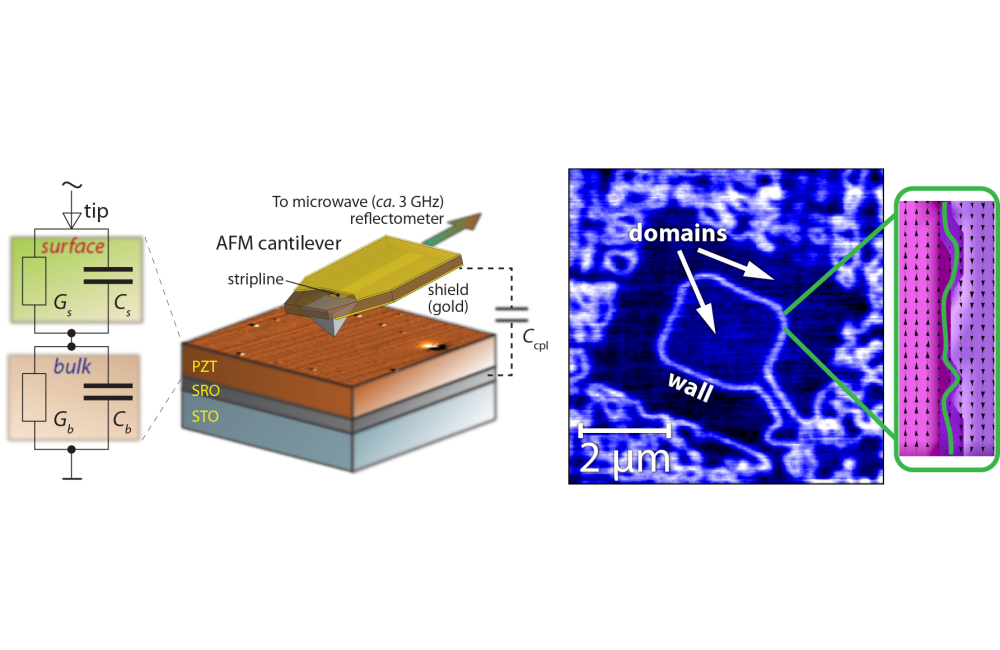June 6, 2016 – Research led by Oak Ridge National Laboratory and published in Nature Communications explored building blocks of future electronics — ferroelectric materials in which topological defects called domain walls can be created by an electric field and detected by an alternating current. The study led by Alexander Tselev, Sergei Kalinin and Petro Maksymovych of the Center for Nanophase Materials Sciences, a DOE Office of Science User Facility at ORNL, found that domain walls in two ferroelectric oxides were great electrical conductors at microwave frequencies, despite being insulators for direct current. In fact, their alternating current conductivity rivaled that of doped silicon. “These findings motivate the potential for alternating current conduction for oxide electronics and other materials with poor direct current conductivity, particularly at the nanoscale,” noted Maksymovych.
Microwave imaging (left) reveals conducting ferroelectric domain walls (right) in lead zirconate titanate. Before microwave microscopy, it was difficult to detect electrically conducting ferroelectric domains. Measurements also suggest the “rough” shape of these walls, indicated with dotted lines in the inset (far right), enables the alternating current conductivity.




